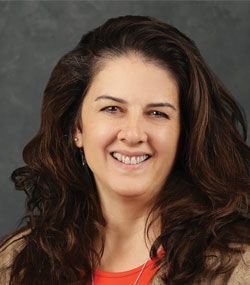
Since his grandfather had a cottage by the Chesapeake Bay, Duane’s family spent summer holidays there.
It was only natural that Duane and I followed suit with our children, as did Duane’s siblings and their families. Visiting the cottage was easy for us, as the farm is a mere forty minutes north of the bay, and it can be a day trip if the cows only allow such a schedule.
We have many great memories with family playing in the water, sitting on the beach and watching our kids have some quality cousin time.
One such memory is with our oldest son, Stephen, and one of his cousins. As they were swimming off of the dock at the end of the pier, there was a lot of activity and the decibel level went up considerably. After investigating the excitement, I found out one of the kids was putting up a fight and not getting in the water. Stephen had her convinced that bay sharks were lurking in the water.
While the fear may have been real to the unwilling swimmer, the reality of a shark in the northern most tip of the bay was not one iota true. However, Stephen had planted enough believability that she did not let a toe touch the water for quite a while. It did not matter how much convincing we tried, or how much trouble Stephen got into; fear was planted, and she was not risking it.
That method of planting fear has been a tactic for centuries, and unfortunately, sometimes it works.
We see that scare strategy used in the dairy industry a lot lately. Sometimes I read about a new thought on milk that is subtle and slightly false, but it gets a foot in the door and maybe plants a tiny question about the value of dairy.
The other extreme is the “bay shark” idea that whams us with false statements so ridiculously untrue that I think no one will believe them. Yet, more and more, I see that people do believe it.
With social media and global information overload, planting fear and getting a reaction from people is easier than ever. The task in front of us can seem as deep and wide as the bay.
Every time I speak to consumer groups, I leave time at the end for questions. Inevitably, someone will ask about a fear induced problem, like GMOs, BST, anti-dairy health claims, or antibiotics in milk.
Those questions are there because of false claims, not with the intention of informing people but rather scaring them away from one of the healthiest foods around. It is a frustrating scenario.
The good news is, not everyone is willing to let fear rule. Most people listen to the truth and rely on dependable sources. If there is trust in a relationship, the fear is diminished.
Farmers are a trusted source to the vast majority, and we have a beautiful story to tell. The story of trust is around us everyday on our farms; it is not taken for granted, and it is part of our everyday lives.
For example: Consumers rely on us to give them a quality product that is produced responsibly. It is expected that we are stewards of our land and cognizant when using our natural resources. Our employees trust that we provide a safe, clean, and positive work place. And of course, our animals are reliant on us to care for them; their well-being is what makes our farms thrive.
When I think of trust of a dairy farm, one of the most touching examples is in a 4-H showring. There isn’t a more beautiful picture of trust than watching a young farmer display his or her animal, after spending many hours grooming, training, and feeding it.
Even when the child is young and the animal large, if the relationship between the two is established, that cow follows the 4-H’ers lead and command. I love watching this picture of trust and respect.
There is a flip side to that picture, though. There are times when the duo walking around the ring are not in sync. Not always, but sometimes, it is because the trust between the two is not deep enough.
My first experience with 4-H was like that. I loved the idea of showing, but my time commitment to my energetic calf was not enough to keep us in sync. The dance across the shavings didn’t represent togetherness; Diane didn’t trust me, and it showed horribly.
Long story short, we were scared of each other. The only way I could have fixed that mismatch is to take time to develop the relationship.
We all have unique and interesting relationships inside and outside of this industry. There is a circle of trust on our farms that starts with how we treat our animals and ends with the people who buy our product.
Because of the level of misinformation out there, I think it is critical that we build trust in unique and opportune ways. Our neighbors, friends, and family deserve to know the truth about our dairy farms. That way, we don’t have to be afraid when the bay sharks start circling.
The author and her husband, Duane, own and operate a 550-cow dairy in Cochranville, Pa.






